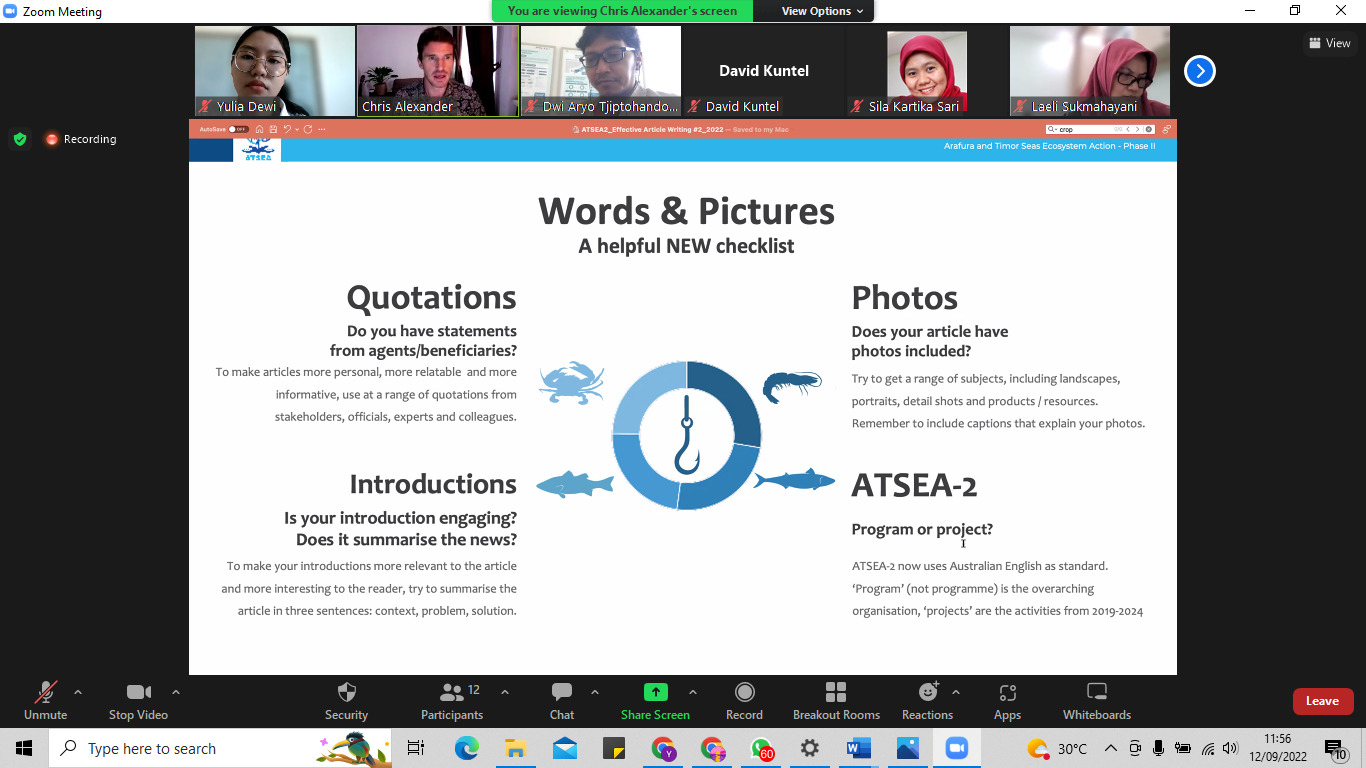In order to raise awareness of important issues and impact policy, sharing information is essential. Information is the bridge between decision makers, researchers and community members. For ATSEA-2, it also enhances the visibility, understanding and impact of projects.
In line with ATSEA-2 goals to improve the dissemination of project information, the Regional Project Management Unit (RPMU) hosted a second virtual training session on Effective Article Writing for RPMU and National Coordination Unit staff from Indonesia, Timor-Leste and Papua New Guinea on Monday, 12 September 2022.
Held online via Zoom, a key topic of this training session was how to interview, photograph and otherwise consult local stakeholders in the course of ATSEA-2 operations, to ensure that their voices are heard, their experiences valued and their stories shared with a wider audience.
The previous session in the creative writing training series was conducted on 13 August 2021, which covered a range of techniques, structures, approaches and styles for journalistic writing. The second session, like its predecessor, included a broad range of tips, examples of best practice and immersive workshop activities, during which participants were supported and encouraged to hone their skills.
The training was led by Chris Alexander, an experienced sustainability journalist and creative consultant based in Indonesia, who specialises in marine conservation. He began the training by splitting participants into pairs in breakout rooms, where they were tasked with interviewing their colleagues. This helped to break the ice, while also eliciting some of the interview skills that participants would go on to develop later.
Next, Mr. Alexander recapped some important takeaways from the previous training with the participants, most of whom were present at the first session. He elicited examples from them about techniques they remembered and encouraged them to share how these skills have since helped them to write more effective, descriptive and better-structured articles on behalf of ATSEA-2.
A key aspect of ATSEA-2 articles that has hitherto been underrepresented is the perspectives of local stakeholders. While many project team members have a solid background in technical writing, many are less experienced with interview techniques, journalism and storytelling from a more personal perspective. It was these gaps that the creative writing training set out to bridge, with practical examples of how, when, where and why to conduct interviews with local people, and then provided practical solutions for integrating these responses more effectively into articles.
Content of the training included the pre-, during and post-interview phases, covering everything from planning and appointments, to research, interviewee selection and preparation of questions that are supportive of article topics and ATSEA-2 agendas. These statements and testimonies can be obtained from a mix of fishers, government officials, prominent local leaders, project personnel, experts, ATSEA-2 colleagues, customary leaders, Indigenous Peoples and Local Communities (IPLCs) and various other people whose experience and expertise are relevant to the project.
Training included practice sessions for interview techniques, such as the use of follow-up questions to elicit more detail from subjects. Participants learned how to avoid misquoting interviewees, by recording the interview and taking notes on the salient points raised in discussion. They also learned how to steer conversations towards issues that can be relevant to articles, such as policy explanation, opinion, advocacy, aspirations, challenges, successes and plans for the future.
When it comes to telling the stories of local stakeholders, Mr. Alexander shared a golden rule with the participants: “show don’t tell,” which essentially means letting the evidence – such as primary source material – speak for itself. “It’s a lot more impactful if you can show readers what the issue is and demonstrate to them why it matters to local people,” he added.
Direct quotations are a useful way to illustrate these issues and personalise them, by giving a voice to stakeholders and allowing them to share their stories. Trainees learned a number of journalistic techniques for integrating these quotations into articles, while also supporting them with evidence such as quantitative data.
The training session, which ran for almost three hours, provided participants with lots of opportunities to develop their skills and relate what they had learned back to their ongoing projects. Many were eager to begin collecting and integrating quotations into their existing articles; one of the ATSEA-2 members had already drafted an article with some quotations from key stakeholders which focused on marine pollution in Kupang, Indonesia. The training session helped them to personalise this article and make it a more impactful representation of the issues and their impact on local people.
The training provided a useful step forward in the ongoing development of ATSEA-2 members, helping them to increase the representation of key stakeholders in their writing. ATSEA-2 will continue striving to improve the dissemination of information in the ATS region, while providing a platform through which our stakeholders can share their messages.
(By Ni Luh Putu Yulia Dewi)




